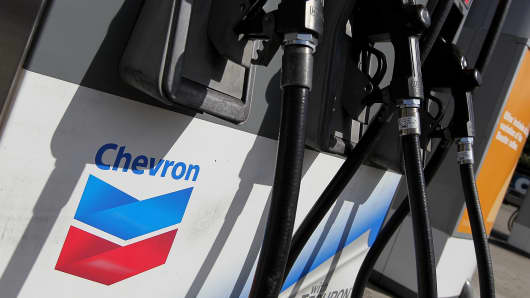At the beginning of the year, gas prices climbed steadily for 32 consecutive days, which coincided with a peak in the price of crude. Now, both are on the way down.
As crude has fallen steadily since late January, prices at the pump have followed suit.
"You're already seeing in lower gas prices," said Paul Hickey, co-founder of Bespoke Investment Group, who said the average price of gasoline has shed nearly 30 cents since February, to about $3.52 on Monday. "Over the coming weeks you'll see a decline, erasing about half the increase that we've seen since December," he said.
Customarily, it takes anywhere between 1-2 weeks for falling crude prices to filter their way downstream to retail gasoline. If the drop in crude is sustained, it could mean gas prices could see some relief by early May.
Yet some market watchers say that crude's tumble comes at an odd time — when gasoline retailers are switching from winter-grade fuel to summertime gasoline. That conversion may delay a fall in retail prices longer than normal, analysts say.
"You typically try and sell out the winter stuff before you bring in the summer stuff. That inventory can do strange things to the market," said Kevin Lindemer, managing director at research firm IHS.
Stefan Wieler, a commodities strategist at Goldman Sachs,said in an interview that U.S. gasoline markets are benefiting from the confluence of a few factors. These include excess capacity in European refineries, which is being exacerbated by softness in Europe's product markets. (Read More: Oil's Tumble Gets Steeper, With Little Relief in Sight)
"While it can signal a lot of things, [soft European demand] can signal outright weakness," he said. "What you do have in Europe this year is that you have a growing overcapacity in the European refining sector. Product demand and gasoline demand, which had been accelerated before credit crisis, continues to decline."
Still, there's a limit to how much relief consumers can expect. IHS's Lindemer said that for every $10 decline in the price of a barrel of crude, consumers can expect that to translate into a gasoline price discount of about 24 cents. As a result, oil would need to fall much further for gas to get below $3 a barrel – a level it hasn't seen since 2010.
Additionally, there's always a chance that geopolitical turmoil, or a change in the outlook for the global economy, will breathe new life into a crude rally. And the increased demand of the summer driving season may also boost gas prices.
"You've got all kinds of things coming up in the next eight weeks that will mess with gasoline relative to crude oil," said Lindemer.


